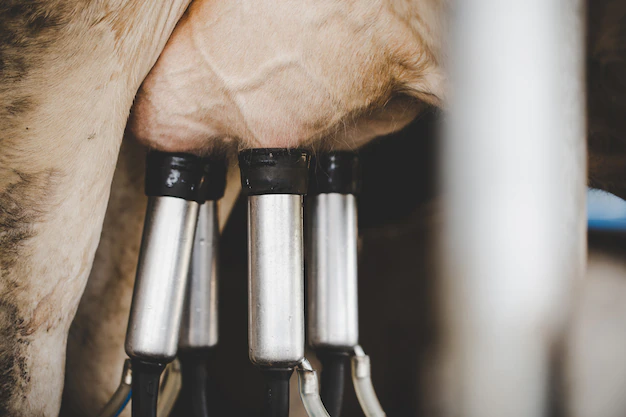Milking machines offer several advantages in dairy farming compared to traditional hand milking methods. Here are some of the key benefits:
- Efficiency: Milking machines are designed to extract milk from multiple cows simultaneously, significantly increasing the speed and efficiency of the milking process. This allows farmers to milk a larger number of cows within a shorter time frame, saving labor and resources.
- Time-saving: With milking machines, the time spent on milking is greatly reduced. Farmers can complete the milking process more quickly, enabling them to focus on other essential tasks on the farm. It also helps in adhering to strict milking schedules and reduces the chances of delayed or missed milkings.
- Improved milk quality: Milking machines are designed to ensure clean and hygienic milking practices. They have automated systems for cleaning, sanitizing, and sterilizing the milking equipment, minimizing the risk of bacterial contamination. This leads to better milk quality and reduces the chances of mastitis or other udder-related infections.
- Enhanced cow comfort: Milking machines are designed to mimic the natural sucking action of calves, providing a more comfortable milking experience for cows. They offer gentle and consistent milking pressure, reducing stress and discomfort during the milking process. This, in turn, promotes better cow welfare and can potentially increase milk production.
- Increased milk yield: Milking machines are known to stimulate milk letdown more effectively than hand milking. The automated pulsation and vacuum systems of the machine closely resemble the natural sucking pattern of calves, helping cows to release milk more efficiently. This can result in higher milk yields compared to manual milking.
- Data collection and monitoring: Some advanced milking machines are equipped with sensors and automation technologies that allow for data collection and monitoring of individual cow milk production, milking duration, and other parameters. This data can be used for herd management, identifying any potential health issues, and optimizing overall milk production.
- Labor savings: Milking machines reduce the need for manual labor during the milking process. Farmers can operate and oversee the milking process with fewer workers, allowing them to allocate human resources to other farm tasks such as animal care, maintenance, and management.
While milking machines offer numerous advantages, it’s important to note that their successful implementation requires proper training, regular maintenance, and monitoring to ensure optimal performance and cow welfare.
Join 'Farmers Mag' WhatsApp Channel
Get the latest Farming news and tips delivered straight to your WhatsApp
CLICK HERE TO JOIN






